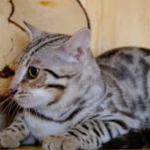Bringing new life into the world through a feline pregnancy entails several crucial stages, from conception to postnatal care. Understanding and supporting your pregnant cat through this journey is pivotal for the health and well-being of both the mother and her litter.
The Journey of Cat Pregnancy
The gestation period for cats typically spans around 63 to 65 days, encompassing three approximate 20-day trimesters. Cats can start their reproductive journey as early as 5 to 6 months of age, emphasizing the importance of understanding their heat cycles and the necessity of spaying to prevent unplanned pregnancies.
Identifying Pregnancy in Cats
Detecting early signs of cat pregnancy can be challenging. Early indicators might include nipple changes (known as “pinking up”) around 16 to 20 days after conception, alongside increased friendliness and docility. As the pregnancy progresses, noticeable abdominal and mammary enlargement becomes evident, accompanied by nesting behaviors in the final 20 days.
Tracking Pregnancy Progress
Determining the stage of pregnancy often involves a combination of veterinary assistance and home observations. Veterinarians can conduct palpations around 2.5 weeks into pregnancy, while ultrasound scans at 3 to 4 weeks can reveal fetal heartbeats. X-rays become effective at around 6 weeks, showcasing skeletal development.
Caring for the Expecting Cat
Proper nutrition is pivotal during pregnancy. Transitioning the cat to a high-calorie diet by the end of the first month of pregnancy is beneficial for the healthy growth of the kittens. Ensuring vaccinations are administered beforehand helps prevent infections and birth defects, while parasite prevention remains essential with vet-approved products and dewormers if needed.
Monitoring Health and Labor
Monitoring the pregnant cat’s health involves keen observation for any signs of illness or unusual discharge. Preparing for labor includes providing a warm, quiet, and safe nesting spot for the impending birth.
Navigating Labor and Delivery
Labor in cats occurs in stages, starting with subtle behavior changes leading to active straining and the eventual passing of fetal membranes and placenta. Typically, delivery takes place within six hours, although extended contractions might require veterinary attention.
Postpartum Care
Post-birth care involves ensuring kittens are dry, warm, and properly attended to. Monitoring the mother’s nursing behavior is critical, with any concerns about kitten rejection warranting a vet evaluation.
In Conclusion
Guiding a cat through pregnancy involves attention, care, and regular veterinary support. Providing a comfortable environment and being vigilant during labor ensure a safe and healthy birthing experience for both mother and kittens.




